
Congratulations on reaching Week 3!
We hope you’ve added some new heart-healthy vegetarian favourites to your dinner rotation.
This week, explore new recipes using different proteins and healthy fats to boost your meal variety!
Your weekly goals
- Cook a plant-based meal and boost your healthy fats intake: Try our Thai vegetable noodle stir fry, featuring tofu and sesame seeds or our Moroccan veggie burgers, with kitchen staples like lentils, chickpeas, olive oil and tahini (rich in protein and healthy fats, made from ground sesame seeds). For more ideas, explore our Boosting healthy fats resource.
- Explore protein variety: Use the heart-healthy protein scale to include a range of vegetarian protein sources in your meals. Watch our short videos for step-by-step guides to creating a heart-health stir-fry, salad or sandwich (includes vegetarian options).
- Review food storage practices: Check out our Storing food safely resource for tips.
So what's for dinner?
Cheesy Mexican vegetable pie
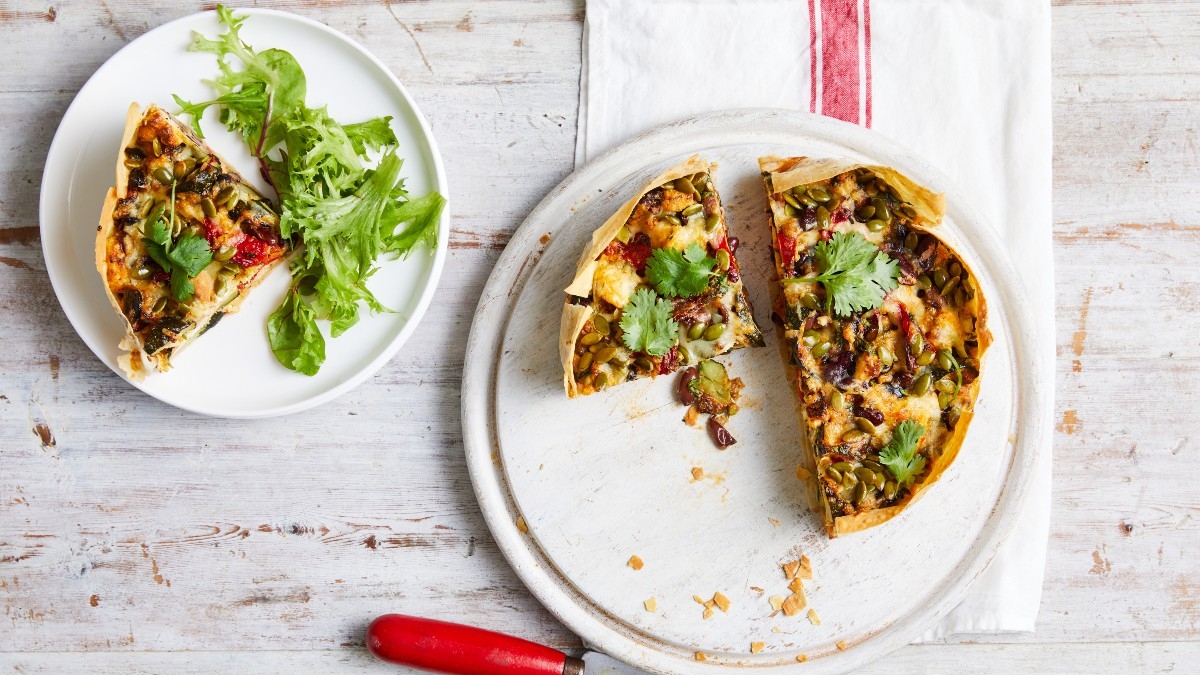
Recipe highlights
- Mountain bread wraps are used instead of a pastry base. They are available from the bakery section in supermarkets.
- Mexican chilli powder blend is a mix of paprika, chilli, cumin, oregano, pepper and garlic. It’s less spicy than regular chilli powder.
- Uses kitchen pantry staples like no-added salt canned three-bean mix and vegetables as main ingredients.
- If you have heart disease or high cholesterol, choose reduced-fat dairy.
Roasted cauliflower and tempeh salad
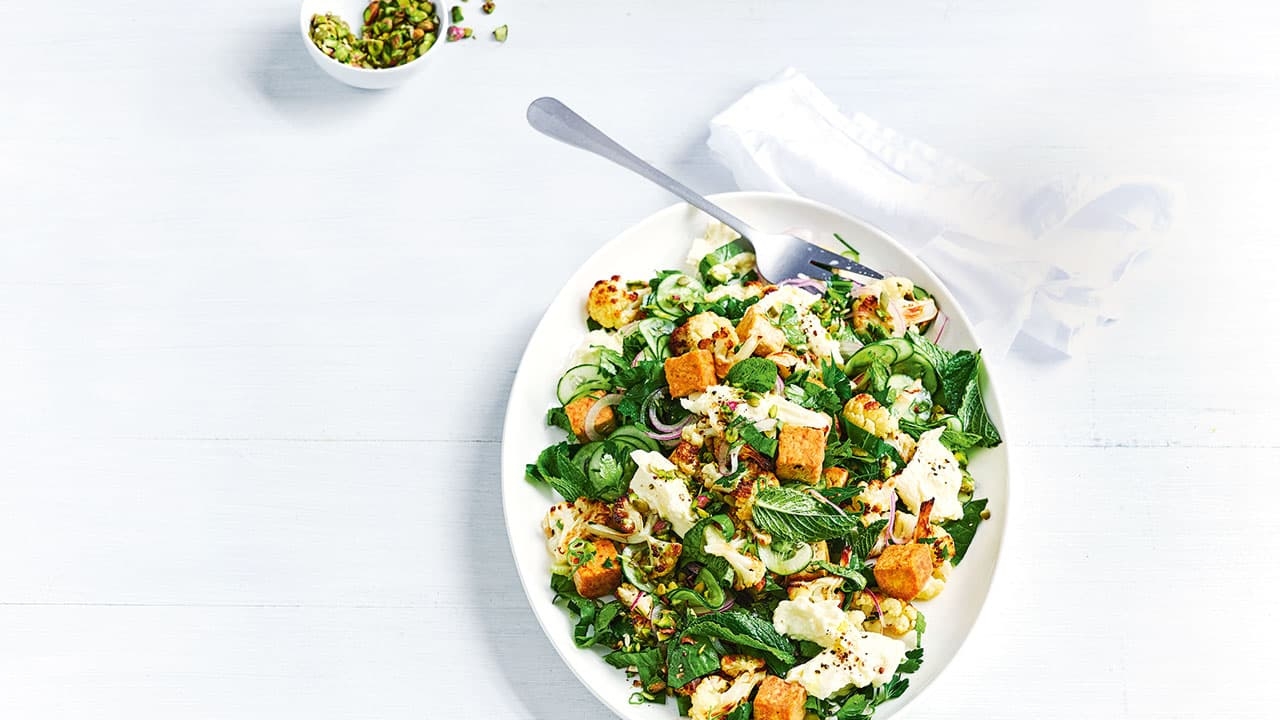
Recipe highlights
- Cauliflower is an excellent source of fibre which supports heart health. The stems can also be eaten. Fresh cauliflower can be replaced with frozen and used in other dishes like stir-fries and soups.
- Tempeh is a fermented soy product with a nutty flavour and firm texture. It can be used as a meat alternative in a variety of dishes such as stir-fries.
- Dukkah can be found in the herbs and spices section of most supermarkets. Check labels and choose the one lowest in sodium per 100g. Leftover dukkah can be sprinkled over vegetables and salads to add extra flavour and texture.
Chilli tofu and sweet potato stir-fry
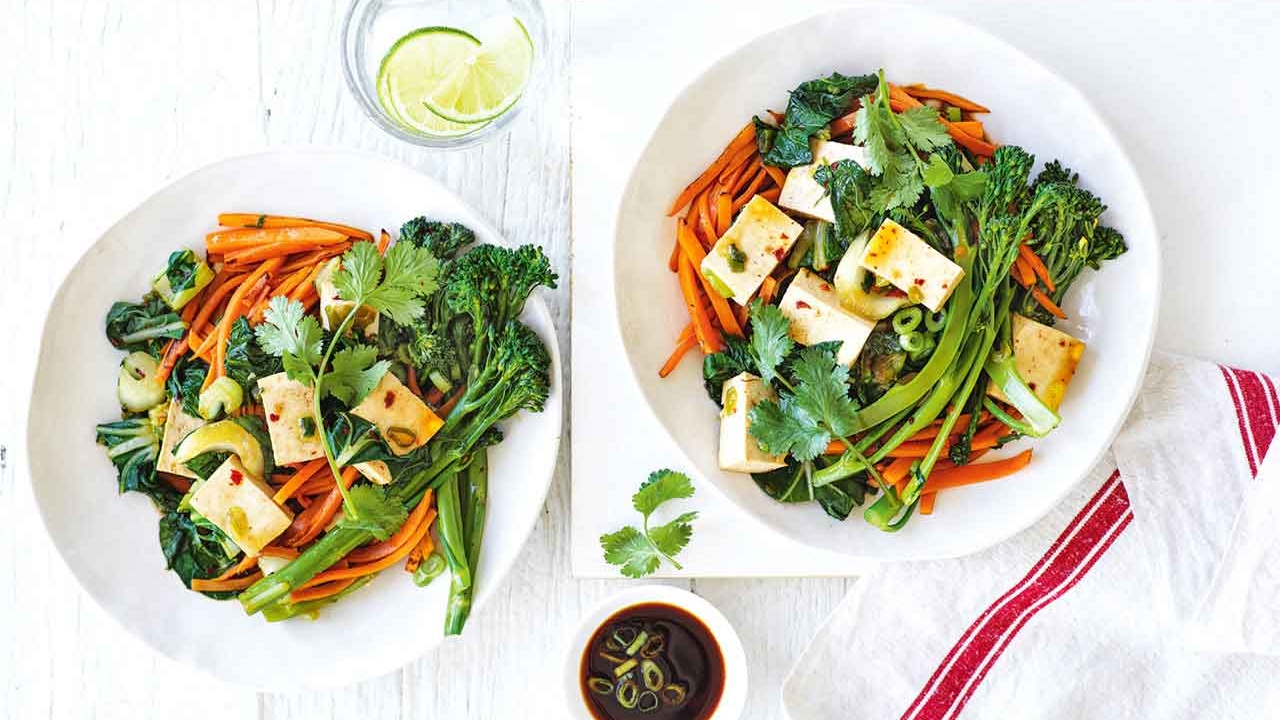
Recipe highlights
- Minimal cooking skills and equipment needed for this stir-fry! A healthy, quick and versatile cooking method that’s easy to master and change up, depending on what ingredients you have in your fridge and pantry.
- Includes budget-friendly ingredients like tofu, sweet potato and seasonal vegetables.
- We’ve used sweet potato as the quality carbohydrate to help slow down digestion and keep you feeling satisfied for longer.
- Heart-healthy ingredients like tofu and olive oil help keep this dish low in unhealthy fats, reducing the risk of heart disease.
Roasted veggie pesto penne
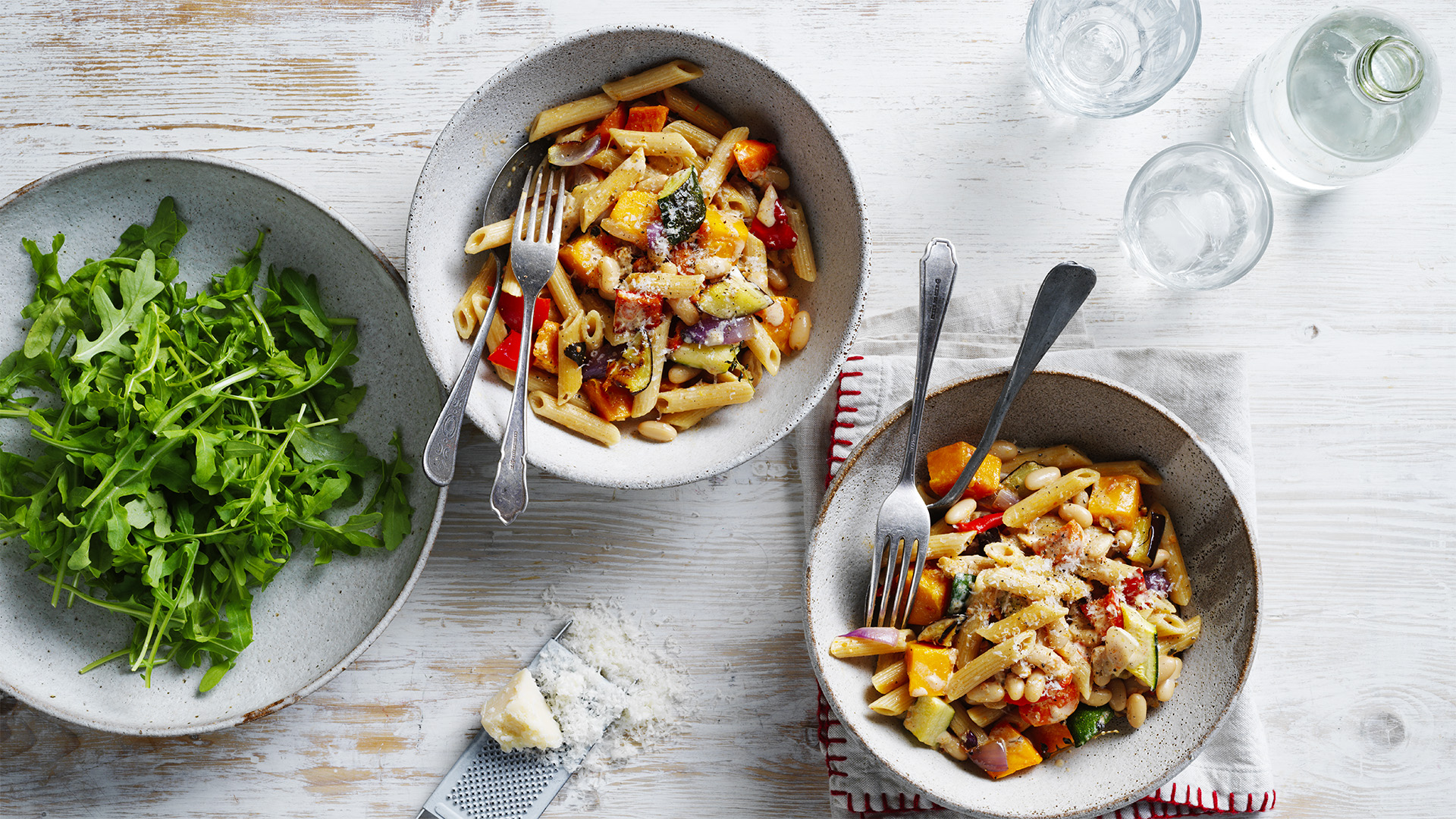
Recipe highlights
- Easy step-by-step recipe to help guide you to recipe success!
- This recipe is ideal for using up any vegetables you have on hand. We used a mix of pumpkin, carrot, zucchini, eggplant, capsicum, red onion and thyme, but you can use any vegetables suitable for roasting.
- For a shortcut, use packaged chopped vegetables for roasting, available in the fruit and vegetable section of major supermarkets.
Green vegetable curry
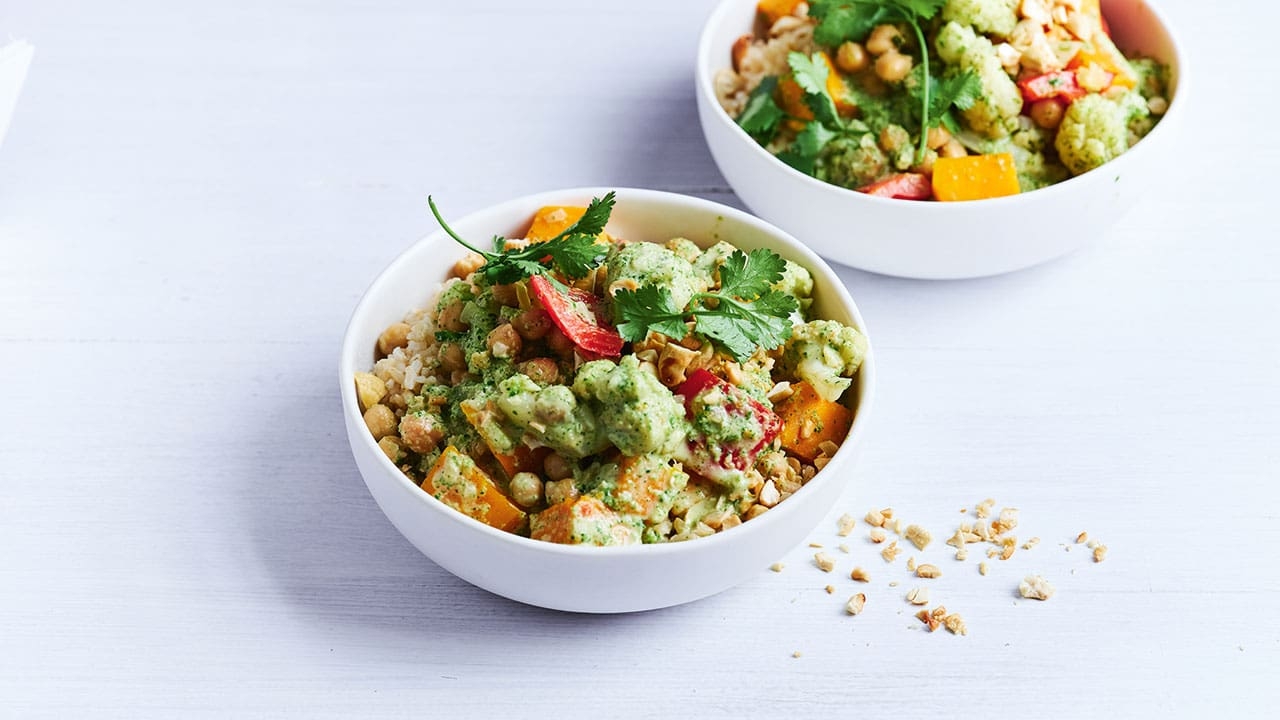
Recipe highlights
- Requires basic cooking tools and skills!
- Uses common, budget-friendly ingredients like pumpkin, cauliflower, chickpeas and brown rice.
- Pantry staples like no-added-salt canned chick peas provide a good source of plant-based protein that’s also rich in fibre.
- We’ve added flavour without the salt by using spices like turmeric, coriander and cumin.
Eggplant and mushroom bolognese
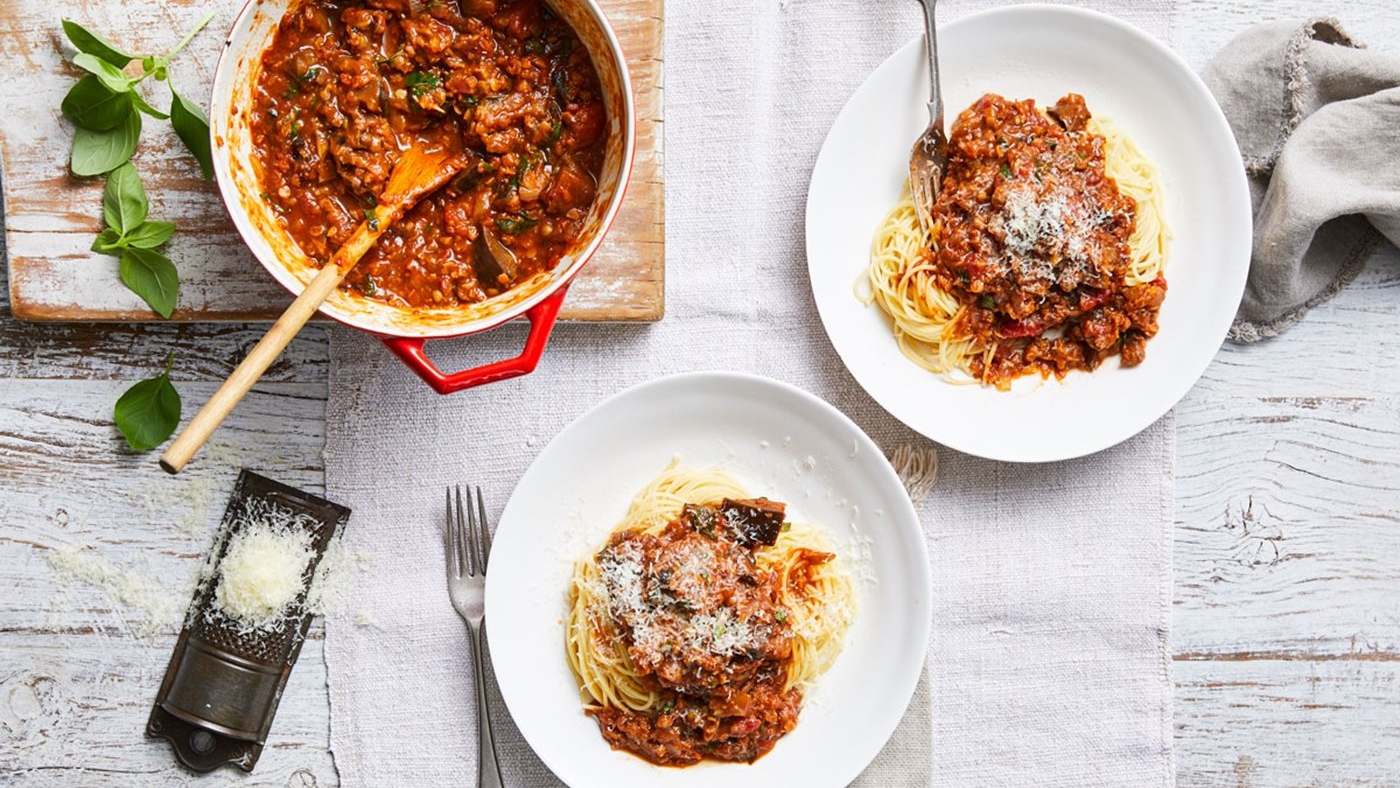
Recipe highlights
- Eggplant and mushroom bolognese can be cooked 1 day ahead. Keep covered in fridge or freeze for up to 1 month.
- Pantry staples like red lentils cook quickly and are great for boosting protein and fibre content.
- Try serving over wholegrain bread or toast instead of spaghetti for a change.
- Using salt reduced stock and no-added-salt tomato products help keep the sodium levels low.
Moroccan nourish bowls
_(1).jpg?crop=1920.0%2C1080.0%2Cx0.0%2Cy101.6&format=pjpg&auto=webp&crop=1920.0,1080.0,x0.0,y101.6)
Recipe highlights
- To reduce the prep time, roast sweet potato, chickpeas and pepitas, and cook quinoa in advance.
- Check labels on hummus and choose the brand lowest in sodium per 100g.
- Quinoa can be replaced with alternative wholegrains like brown rice if preferred.
- Alternative use for lunch box prep – just add avocado before serving.
- Harissa is a North African spice and herb blend. It is available from the spice section in supermarkets and fruit and vegetable stores. Alternatively, you can make a similar version by mixing smoked paprika, chilli powder and cumin.
How to make a heart-healthy stir-fry
Explore the elements that make up a heart-healthy stir-fry to help you make your own version!
How to make a heart-healthy salad
Explore the elements that make up a heart-healthy salad to help you make your own version!
How to make a heart-healthy sandwich
Explore the elements that make up a heart-healthy sandwich to help you make your own version!
Protein and healthy heart
Eating healthy proteins from plant-based sources and eggs as part of a balanced vegetarian diet can help lower your risk of heart disease. Choose a variety of plant-based proteins like beans, lentils, chickpeas, tofu, tempeh, nuts, and seeds—great sources of heart-healthy protein and fats. Eggs and dairy, like yoghurt and cheese, can also be included.
Some proteins are less beneficial for heart health—avoid processed meat alternatives high in sodium and saturated fats. Read labels and choose minimally processed plant-based options.

This week's healthy eating tips
Set yourself up for success in the kitchen!
Plan: discover heart-healthy proteins to add to your meals
- Choose your meals to cook this week, to boost your intake of heart-healthy protein and healthy fats.
- Explore the heart-healthy protein scale and plan meals featuring a variety of vegetarian protein sources like beans, lentils, tofu, tempeh, nuts, and seeds.
- Review our Boosting healthy fats resource for extra ideas.
Shop: budget-friendly ingredients to boost your protein intake
- Add ingredients for your chosen meals to your shopping list, such as canned chickpeas, lentils, fresh vegetables, whole grains, tofu, and nuts.
- Revisit our budget-friendly shopping resource for tips on getting the best buys on heart-healthy groceries.
- Look out for ‘specials’ and ‘sales’ on food storage essentials like airtight containers to keep your ingredients fresh and reduce waste.
Food prep: cook, customise, and store meals with confidence
- Follow our recipe video guide for Moroccan Veggie Burgers for an easy, nutritious meal.
- Watch our quick videos on preparing heart-healthy vegetarian stir-fries, salads, or wraps so you can make your own vegetarian version!
- Organise your fridge and pantry with tips from our Storing food safely resource to keep ingredients fresh and reduce waste.